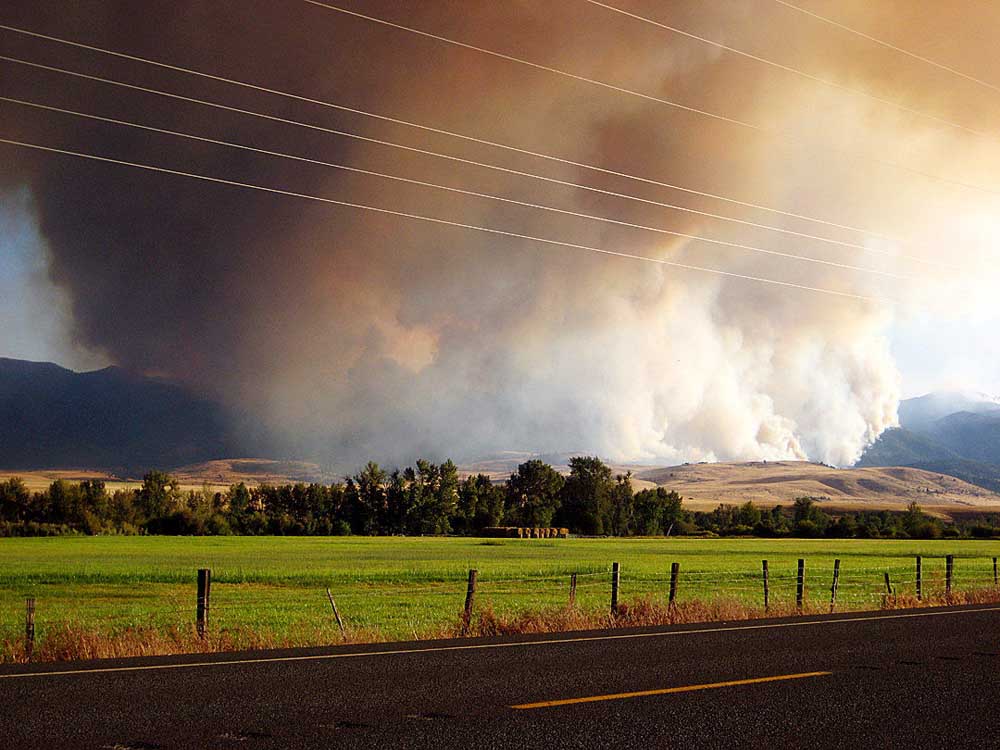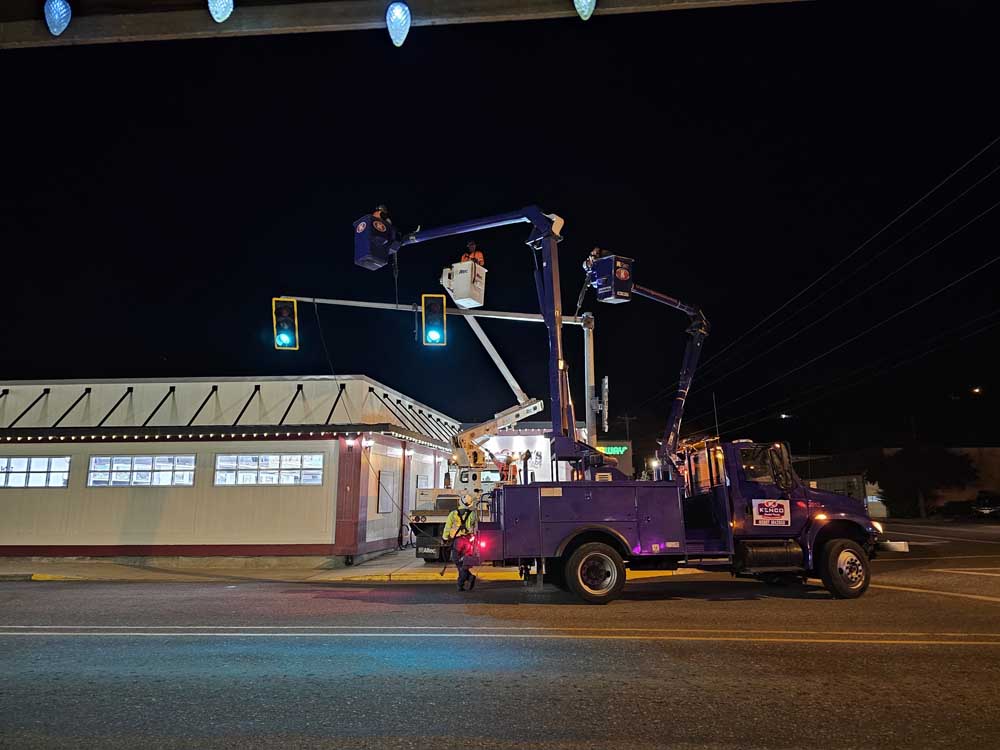Fighting fire with fire
Published 12:56 pm Tuesday, September 26, 2017

- The 2015 Canyon Creek Complex fire explodes just across the valley from Prairie City on Aug. 26, 2015.
As wildfires continue to burn in Oregon and throughout the West, a research ecologist’s insights from the past could shape the future of fire management.
A combination of factors has turned forests that were once a patchwork of tree stands and open meadows into overgrown tinderboxes, prime to erupt into the massive fires plaguing the current era that are far more devastating than the smaller, more frequent blazes of the past, Dr. Paul Hessburg said during his presentation “Era of Megafires” Thursday in John Day.
Many forests, he said, are a “ticking time bomb,” needing only a flash of lightning or a human-caused ignition to quickly grow into a force consuming everything in its path and darkening the skies with the haze becoming increasingly familiar each summer.
Even by conservative estimates, the fires will continue to increase in size and number, he said. But there is hope.
Understanding how low-intensity fires help prevent megafires and how management practices contributed to the current conditions, Hessburg said steps can be taken to improve conditions and reduce risk.
“We can learn to live with wildfires in another way,” he said.
The 191,067-acre Chetco Bar Fire in southwestern Oregon, 97 percent contained as of Monday, has burned 30 structures. The suppression cost is already up to $60.9 million.
And that’s only one of 14 large fires burning in the Northwest, according to the National Interagency Fire Center.
This year, 48,850 wildfires have burned 8.5 million acres across the United States, up significantly from the 10-year average of 53,691 fires burning 5.8 million acres.
In 2016, 4.9 million acres burned, but that was following the 2015 season that burned 9 million acres, including the Canyon Creek Complex that destroyed 43 structures in Grant County.
While the Forest Service spent only 17 percent of its budget on fire suppression 25 years ago, the agency spent 57 percent to fight fires in 2015, Hessburg said.
As a federal agency, taxpayers ultimately shoulder the cost of firefighting. The problem is exacerbated when the Forest Service is forced spend money planned for fire prevention to control massive blazes.
And the actual cost of fires is even worse. From lost homes and other negative costs, Hessburg said the economic impact of a fire is 24 times the suppression cost.
“Fires financially impact every taxpayer,” he said.
Before the current era of megafires, Hessburg said, when frequent, low-intensity fires created a dynamic patchwork of tree stands and meadows, that very patchwork sculpted by fire prevented larger fires from occurring.
With less dense tree stands, he said, fires would consume grasses and smaller trees, brush and dead material on the forest floor, while sparing the canopies of some of the larger trees. Those trees, some of which need fire to reproduce, could reseed the nutrient-rich area created by the fire, he said.
Even when the fires climbed the fuel ladder from the grasses through the other material and into the leaves and needles of the larger trees, the fires were less prone to crown — spread treetop to treetop — because the trees and tree stands were farther apart.
Now, Hessburg said, that patchwork has filled in. Instead of fires that burn one tree stand and stop at the next meadow or that remain on the ground below the tree canopies, the additional fuel creates hotter fires that climb into the treetops and burn from one to the next unimpeded in the dense stands.
The current conditions were not caused by a single factor, Hessburg said, but a variety of changes through the years that have culminated in today’s megafires.
Before European settlement, Hessburg said American Indians would intentionally light fires in spring and fall. These first prescribed fires helped prevent larger blazes during the summer, he said.
In the mid-1800s, he said, European immigrants began grazing cattle, which reduced frequent fires by reducing grasses.
With railroads came unintentional fire breaks that stopped the spread of low-intensity fires, he said.
After the Big Burn in Washington, Idaho and Montana in 1910 that burned 3 million acres and killed 87 people, Hessburg said fire became “public enemy No. 1.”
These and other factors preventing small fires, coupled with a lack of understanding of the important role of fire on the forest, “worked together to create the current epidemic of trees, more trees than the landscape can support,” Hessburg said.
The tree density not only increases the risk of fires, he said, but also makes the forest more susceptible to damage from insects and disease.
But with current climate conditions, increasing temperatures and drought, Hessburg said forests are primed to burn.
Current fire seasons are 40-80 days longer than they were 50 years ago, he said, and even the most conservative estimates for the future are dire.
Despite the difficulties ahead, Hessburg said there are tools and options available to mitigate some of the risks.
He said, while wildfires are inevitable — and, in fact, necessary for many species of plants and animals — maintaining fire-adapted communities, ensuring safe, effective fire responses and creating fire-resilient landscapes would help reduce the damage.
“We can restore much of the power of that patchwork,” he said.
With more homes being built in treed areas adjacent to forests — known as the wildland urban interface — Hessburg said it is important for communities to be prepared for wildfires. Organizations such as Firewise, which has several local communities participating, provide free help to people who are interested.
To create resilient forests by reducing fuels and returning the land to more natural conditions, prescribed burning and logging — or mechanical thinning — are two of the best options, he said, but both face opposition.
After clearcut logging of the past, he said many are “timid” about thinning projects, despite the fact current sustainable logging practices are far more ecologically sound. Logging reduces the fuel load while providing an economic benefit to the communities that house Forest Service employees.
Prescribed burning allows forest managers to reintroduce fire on the landscape in a low-intensity setting, providing the benefits of fire similar to when the forest was a patchwork of stands and meadows with less risk of catastrophic crown fires.
However, prescribed fires can only be ignited when weather conditions are expected to be safe and conducive to the operation, and even when those conditions are met, state smoke management goals often prevent prescribed fires from being permitted. Hessburg said prescribed burns are regulated as a controllable nuisance because the smoke can exacerbate health problems, but when the much larger wildfires inevitably erupt, the smoke is far worse.
“There’s no future without lots of fire and smoke,” he said. “How do you want your fire? How do you want your smoke? How do you want your forests in the future?”





